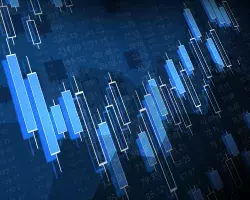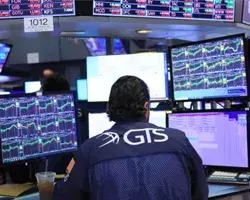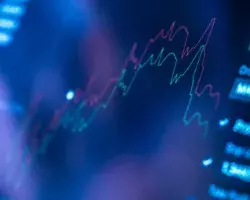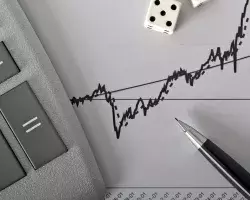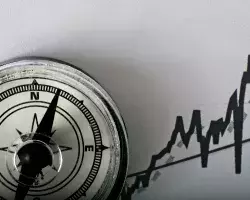Volatility
Adaptive Trading: Strategies for Every Market Condition
Understanding "market conditions" is a pivotal aspect of navigating the complex landscape of financial markets. At its core, market conditions encapsulate the intricate web of factors shaping the overall state and behavior of a financial market at any given point in time. This dynamic concept is influenced by an array of elements, including supply and demand dynamics, economic indicators, investor sentiment, geopolitical events, and regulatory changes.
Intermarket Analysis and Its Significance in Forex Trading
In the intricate realm of financial markets, where currencies, commodities, bonds, and equities intertwine, a strategic approach known as intermarket analysis takes center stage. This methodology delves into the complex relationships and interdependencies among different asset classes, providing traders with a holistic lens to decipher potential trading opportunities and overarching market trends.
Everything You Need to Know About Forex Volatility: Navigating, Understanding, and Capitalizing on Dynamic Currency Markets
Navigating the foreign exchange market requires a profound understanding of the concept of forex volatility. This fundamental aspect encapsulates the extent of price fluctuations within currency pairs over defined periods, serving as a critical metric that shapes trading opportunities and risk management strategies. The dynamic nature of forex volatility reflects the constant ebb and flow within the currency market, influenced by a myriad of internal and external factors.
Balancing Act: Thriving in the Turbulent Terrain of Financial Markets
In the volatile world of trading, where unpredictability reigns supreme, traders face challenges that extend beyond market conditions. This article aims to explore the intricate interplay between personal agency and success, drawing parallels with team sports and emphasizing the pivotal role of individual actions in shaping trading outcomes. Much like the intricate workings of any profession, the human element emerges as a critical determinant of success.
Global Markets Tread Lightly Amidst Divergent Cues: Inflation and Interest Rate Talks Prevail | Daily Market Analysis
Key events: USA - Core PCE Price Index (MoM) (Jan) USA - Core PCE Price Index (YoY) (Jan) USA - Initial Jobless Claims USA - Chicago PMI (Feb) On Wednesday, the S&P 500 experienced a slight decline, but the broadening rally beyond the technology sector helped mitigate losses as investors awaited crucial inflation data that is expected to influence the Federal Reserve's stance on interest rates.
Mastering Parabolic Moves: Riding the Ups and Downs of the Stock Market Rollercoaster
In the fast-paced world of stocks and financial markets, parabolic moves represent an extraordinary phenomenon. These surges, characterized by rapid and unsustainable upward price movements of stocks or other financial assets, capture the attention of traders and investors alike. It's a term used to describe the moment when an asset's price accelerates sharply, tracing a parabolic curve on the price chart. In this article, we'll delve into the nature and characteristics of these parabolic moves, exploring the reasons behind their occurrence and their impact on the financial landscape.
Consistency in Trading: From Turbulence to Tranquility
Embarking on the journey of trading is akin to navigating the dynamic and ever-changing seas of the financial market. From extreme volatility to sustained trends, the market landscape is shaped by factors ranging from natural disasters to geopolitical events. Within this turbulence, the concept of consistency emerges as a beacon for traders seeking stability and success. In the realm of trading, consistency means the ability to navigate diverse market conditions and generate yields over the long term.
Market Volatility: Strategies, Tools, and Insights for Traders
Volatility stands as a pivotal element within the financial market, denoting the degree and speed at which an asset's price changes over time. Greater volatility indicates rapid fluctuations in the asset. For instance, if a stock commences trading at $10, ascends to $13, and then descends to $9 within a single session, particularly in a brief span, it qualifies as highly volatile - especially pertinent for scalpers.
Navigating Financial Storms: Top Assets for Trading in Times of Volatility
In recent months, the level of market volatility has surged significantly due to the impact of the coronavirus pandemic and the risks it poses to the global economy. According to most estimates, the world could be on the brink of a depression, with the potential disappearance of many companies. However, this is not the first time market volatility has been a concern.
A Comprehensive Guide to Successful Intraday Trading: Strategies, Pros and Cons, and More
In the fast-paced world of finance, where markets are constantly in motion, intraday trading has emerged as a dynamic and exhilarating approach to trading financial instruments. Unlike traditional investing, which often involves holding assets for the long term, intraday trading, commonly known as day trading, revolves around capitalizing on short-term price movements that unfold within minutes, hours, or even seconds.

